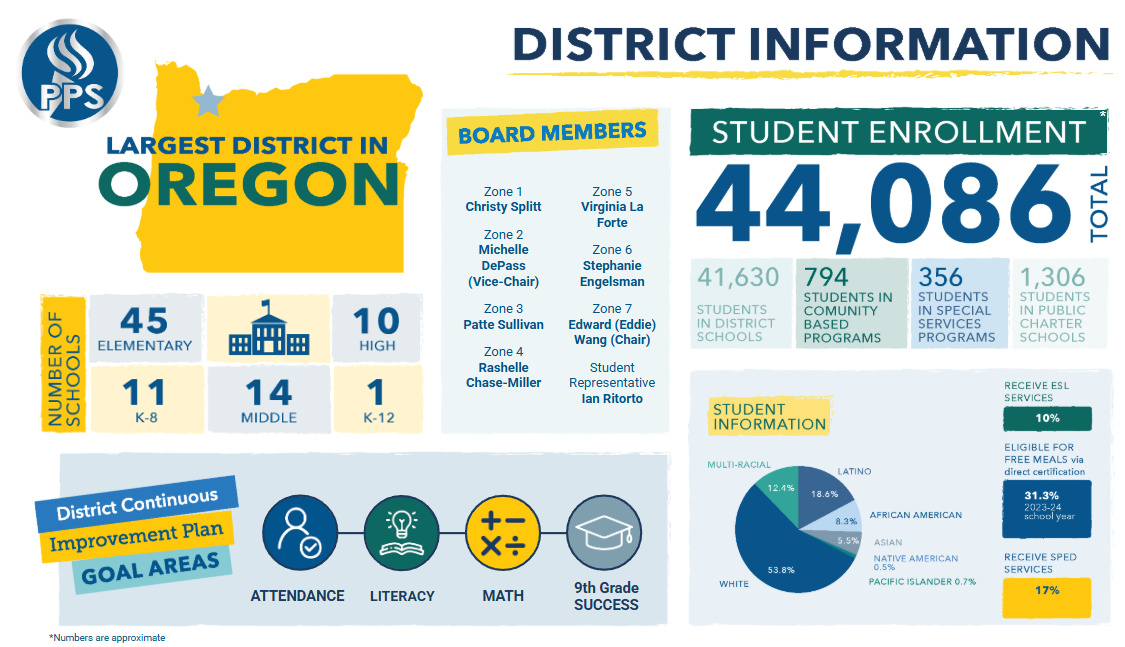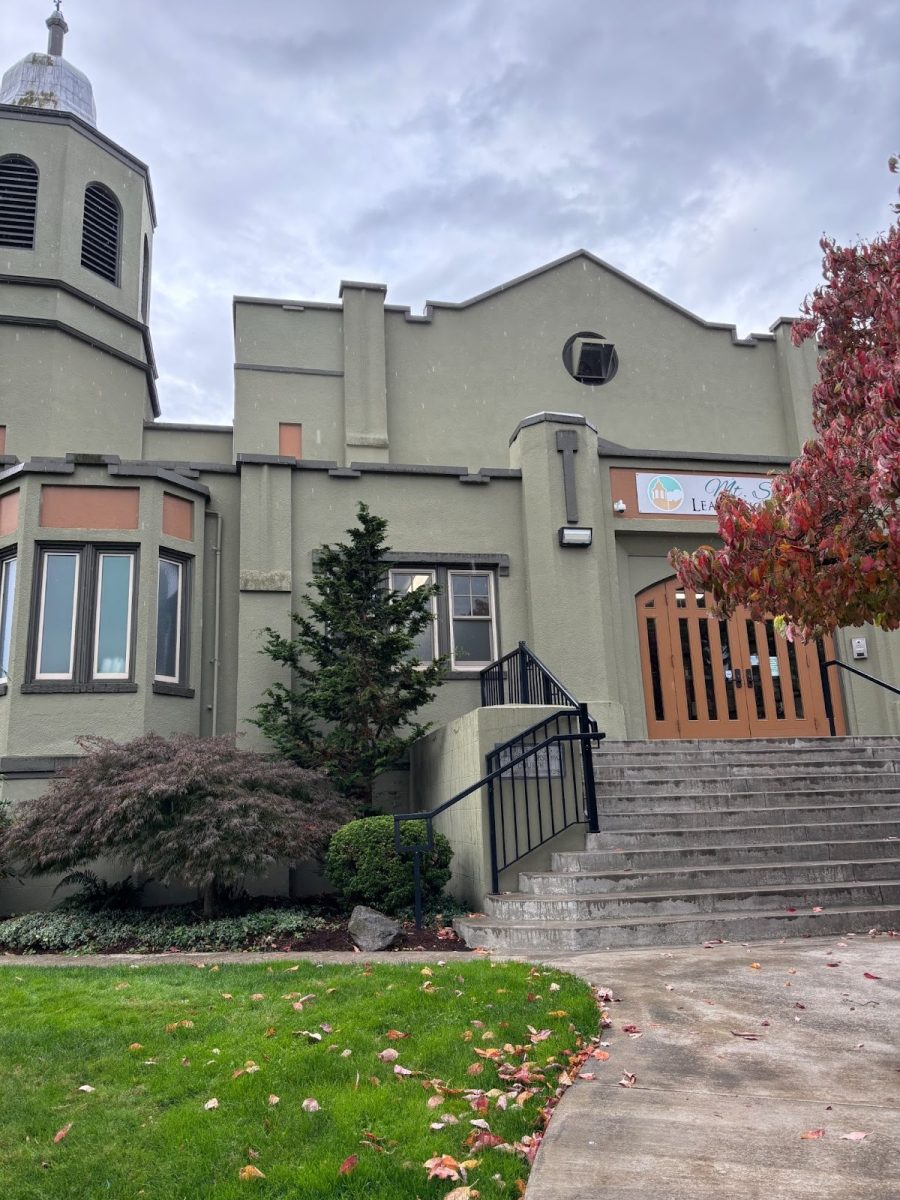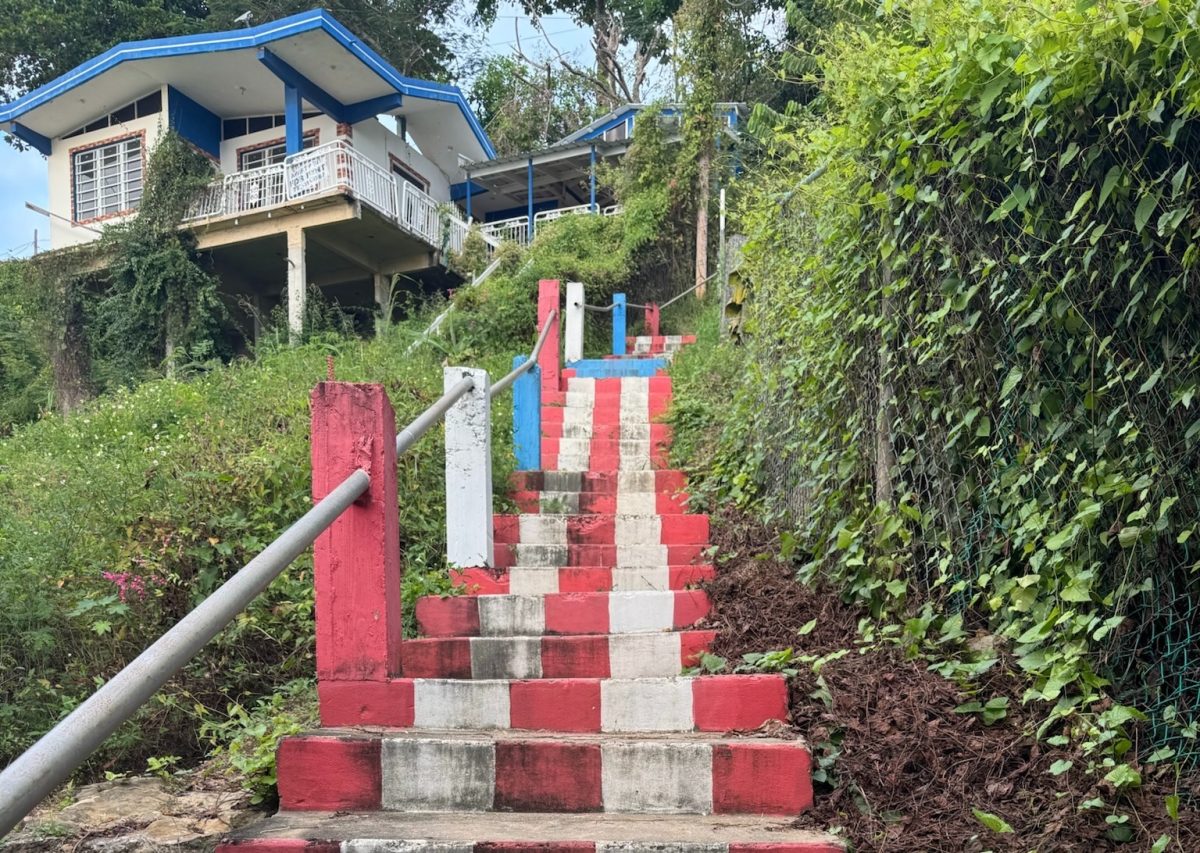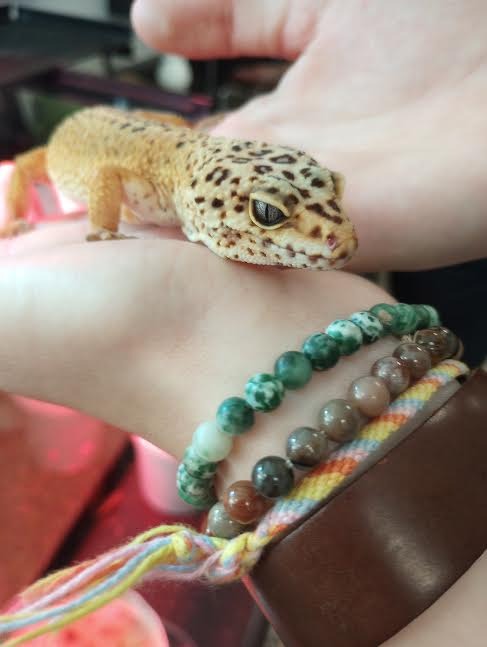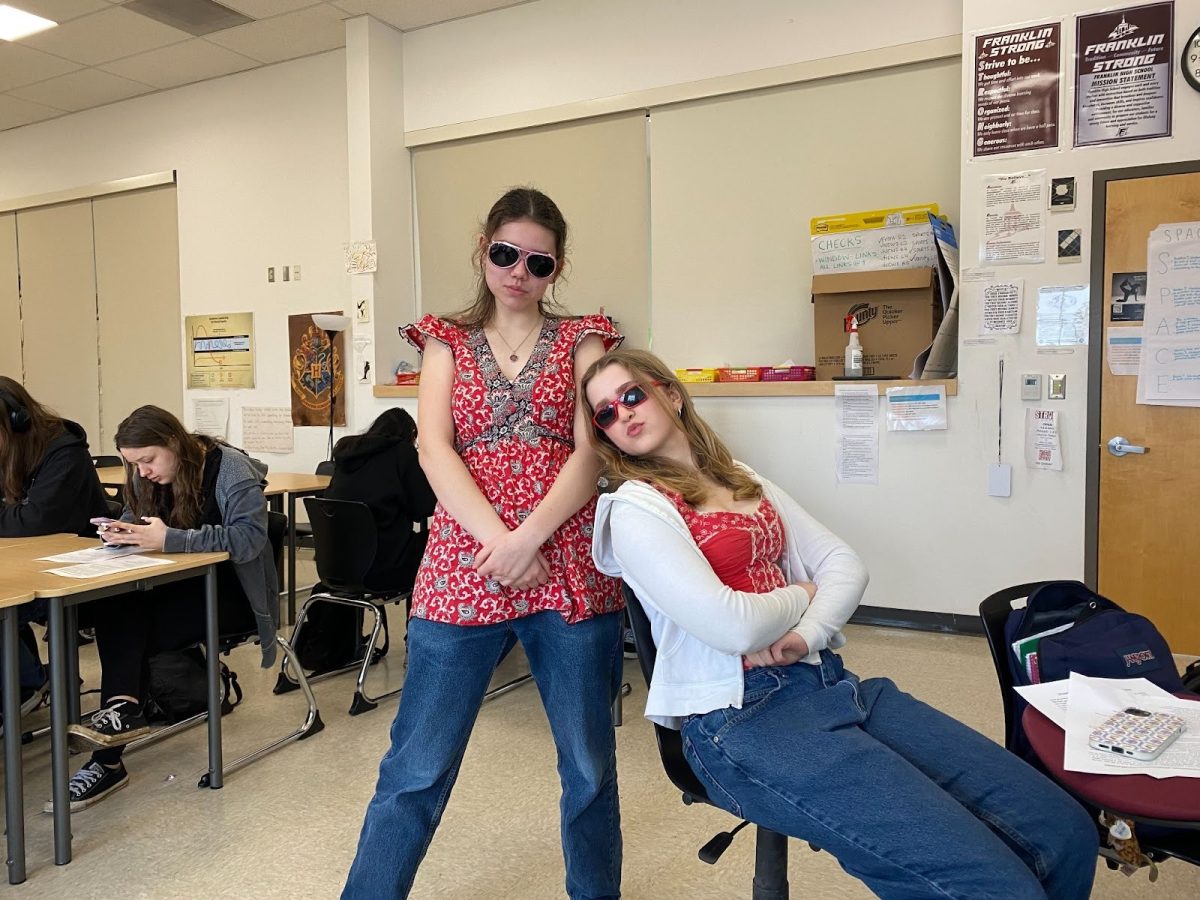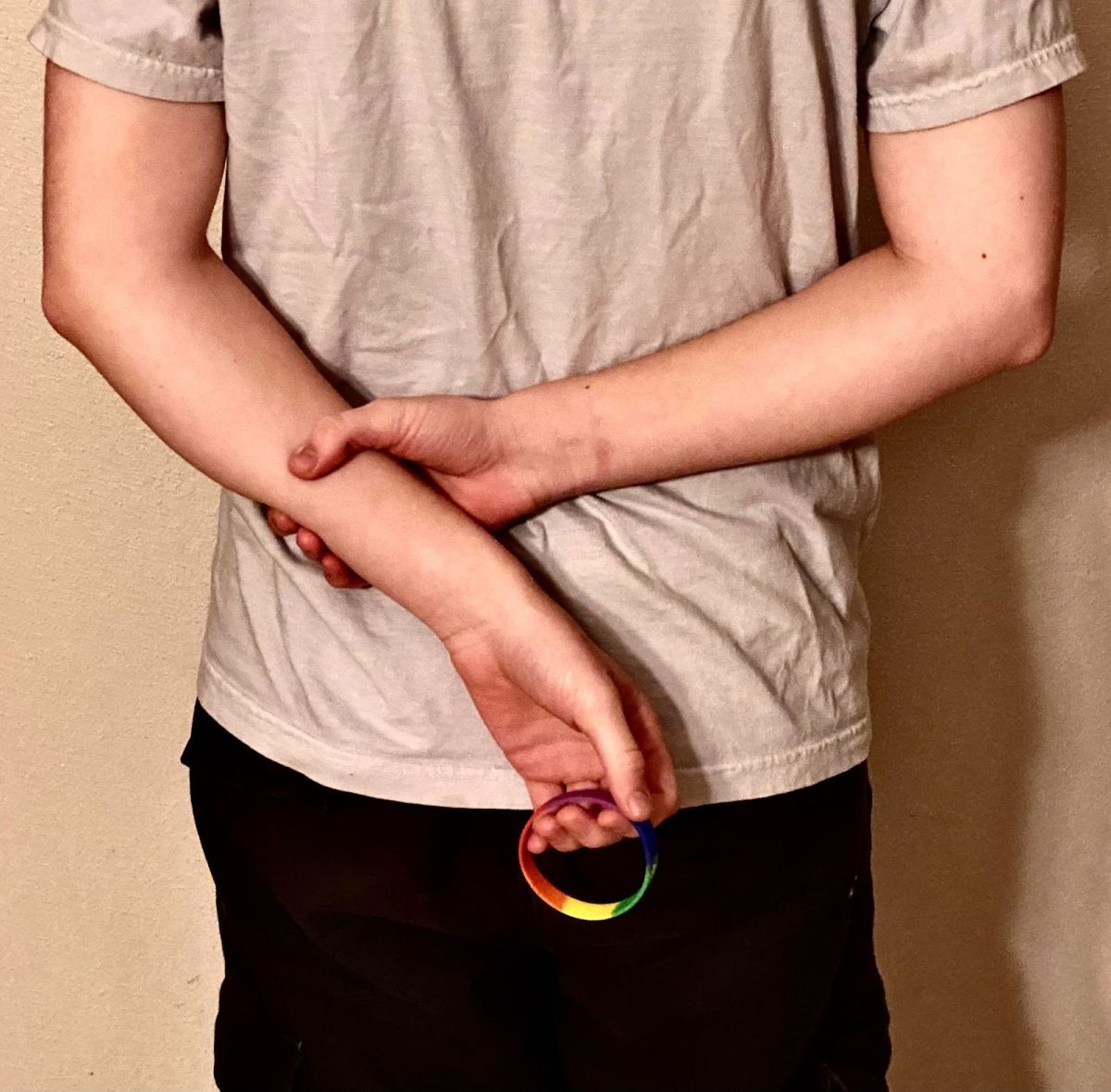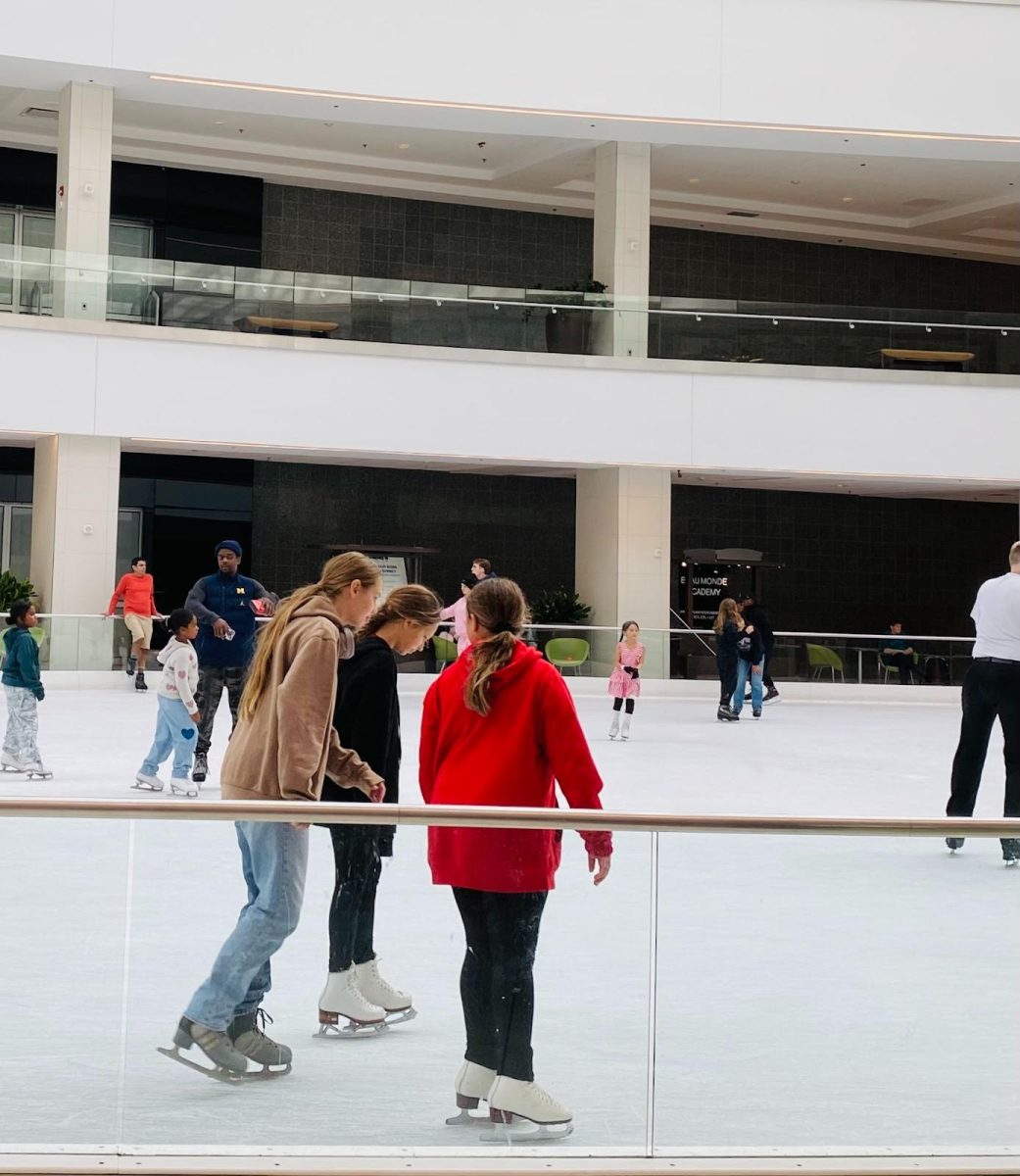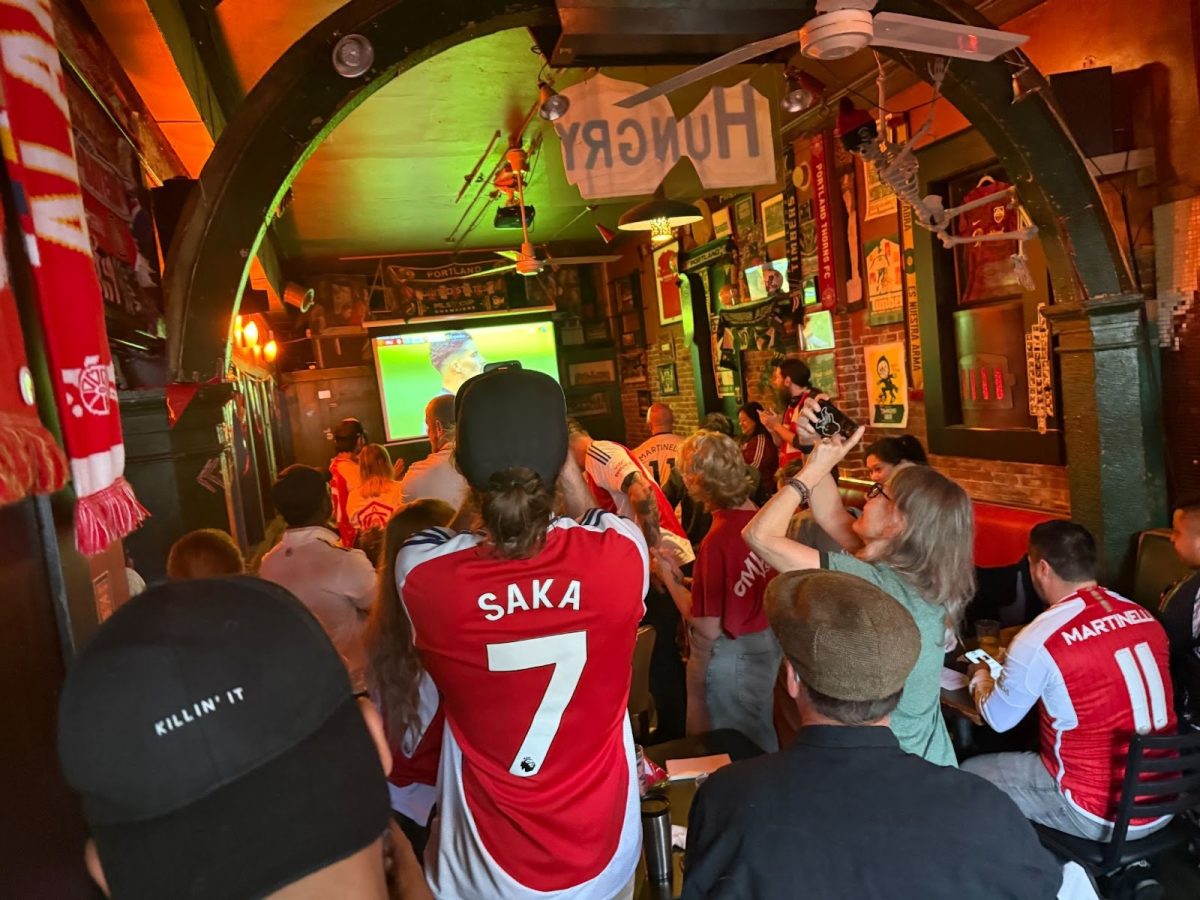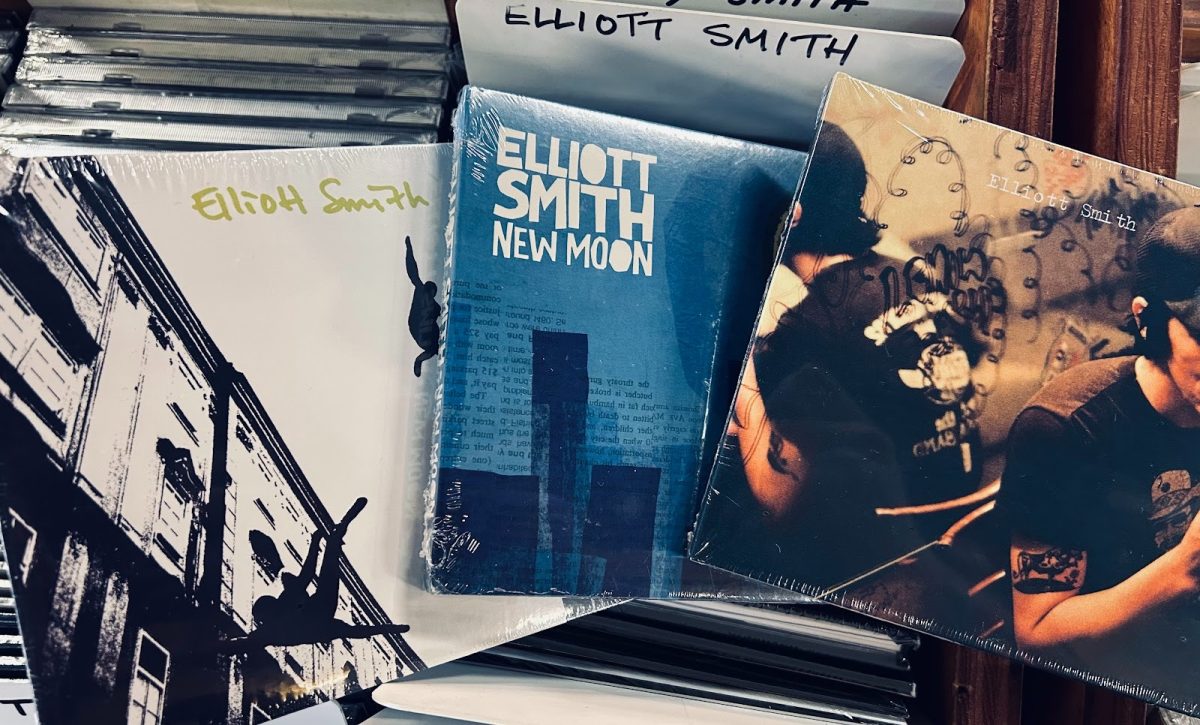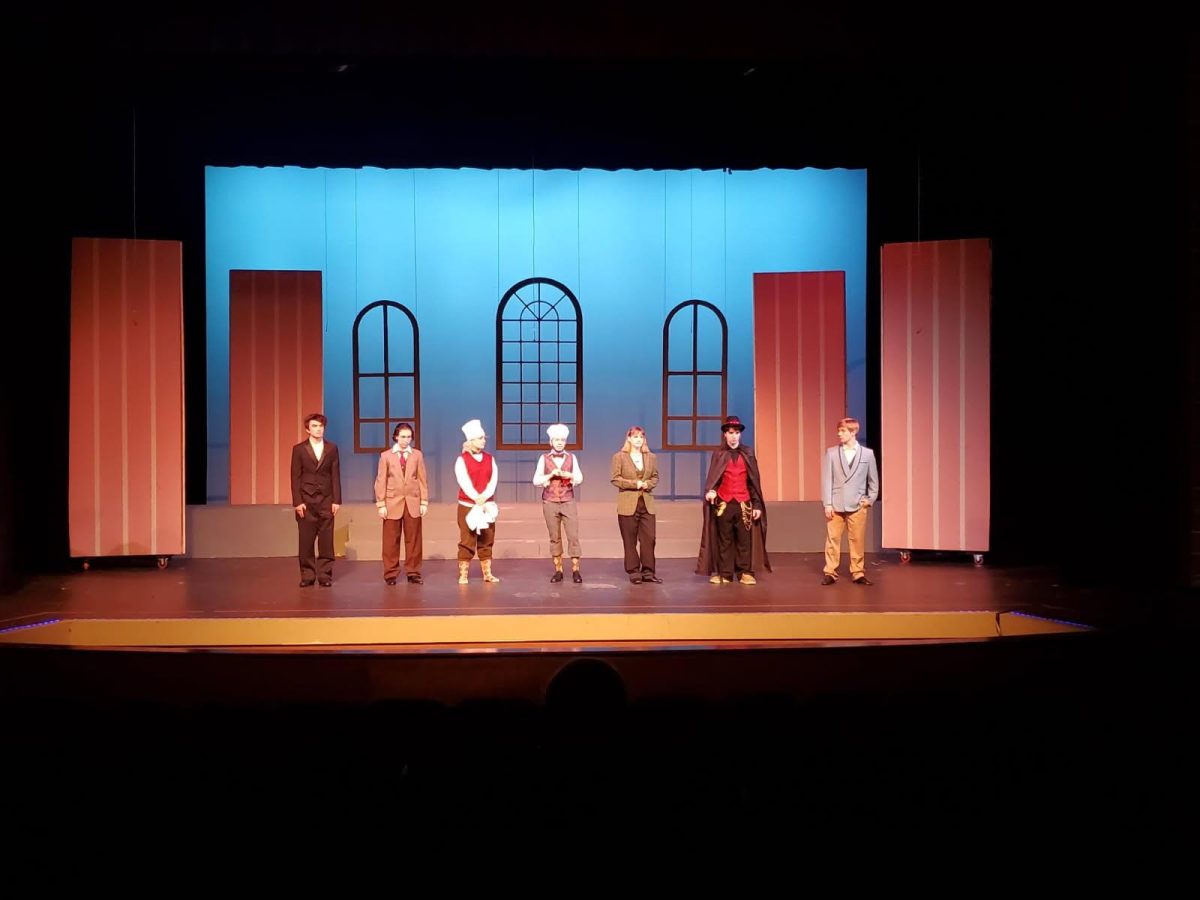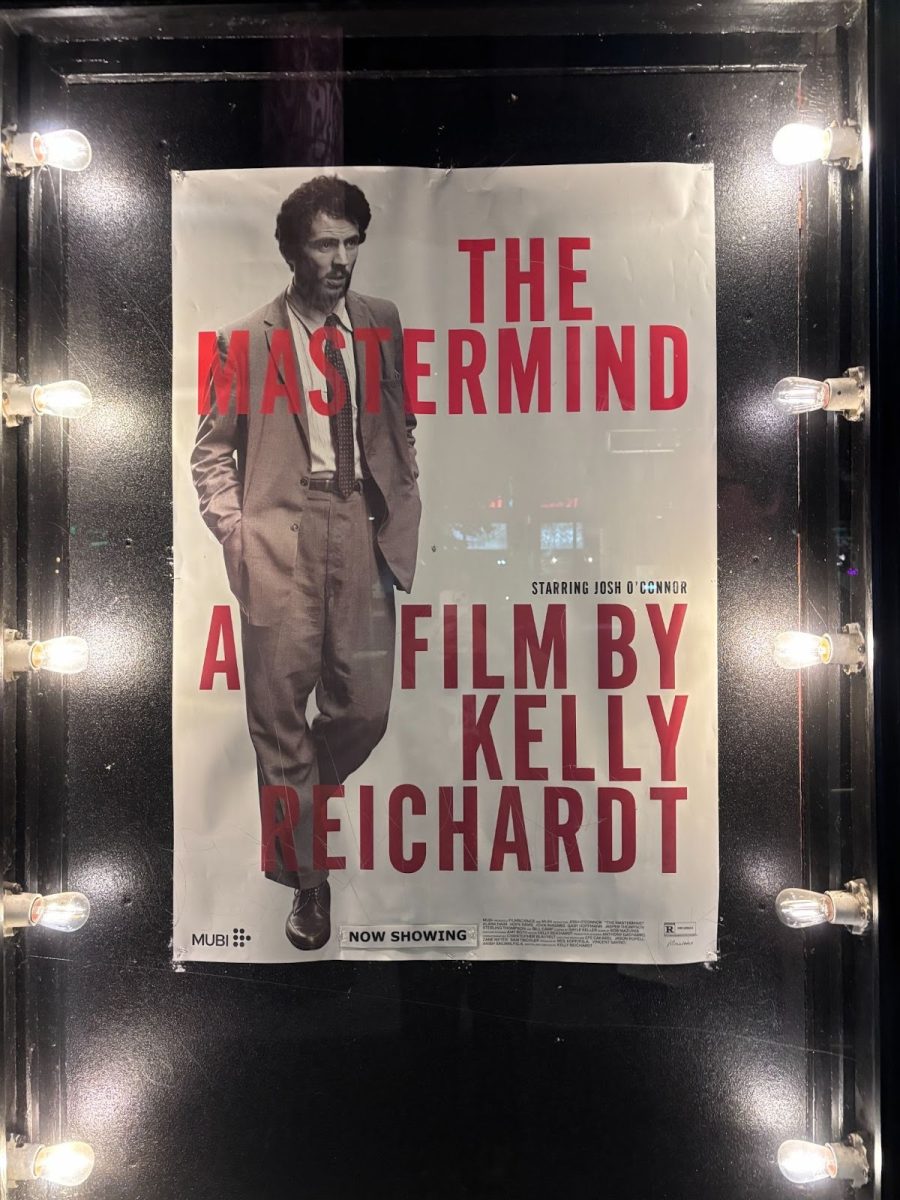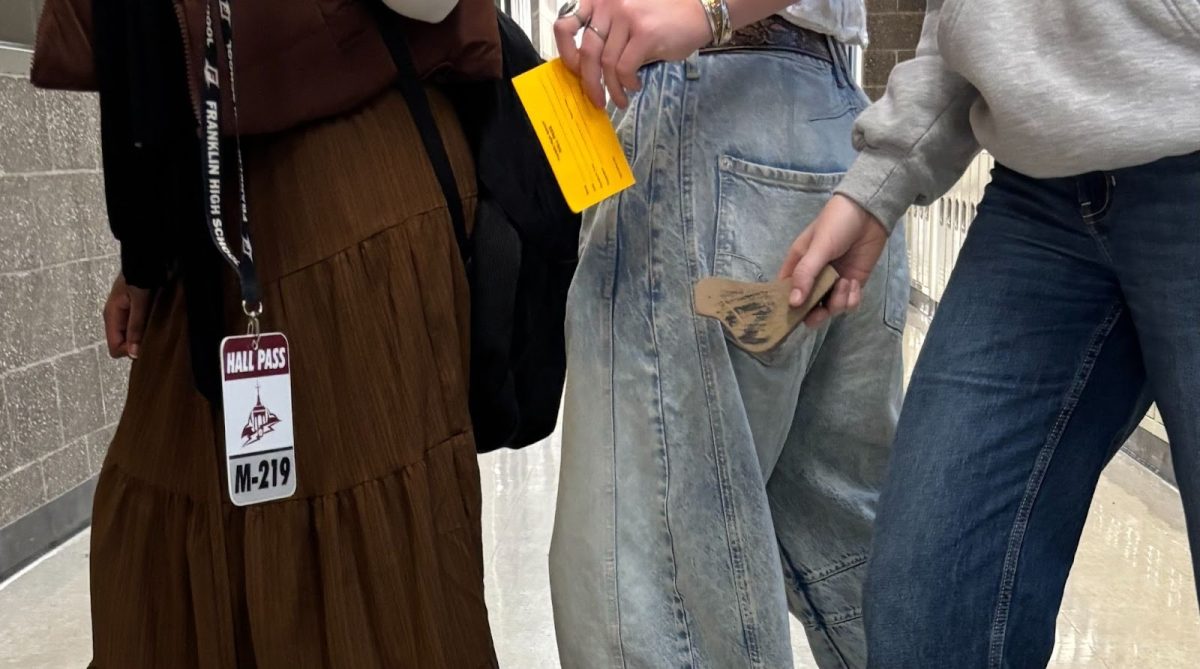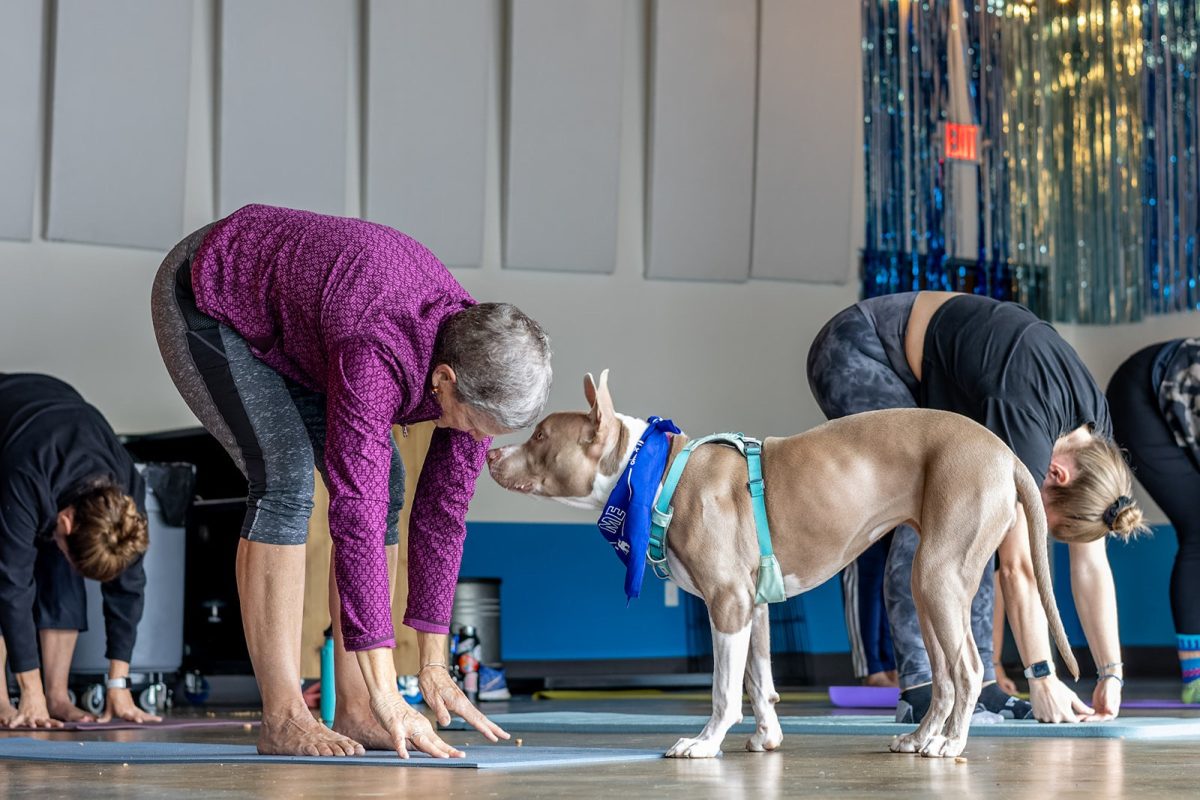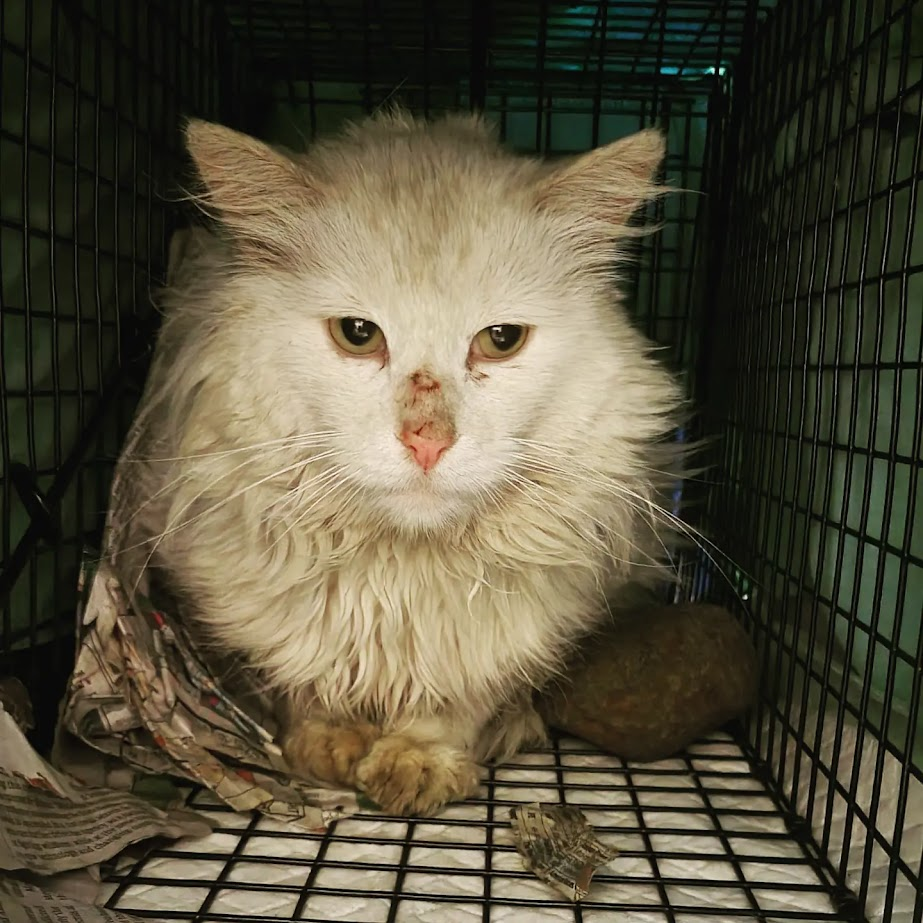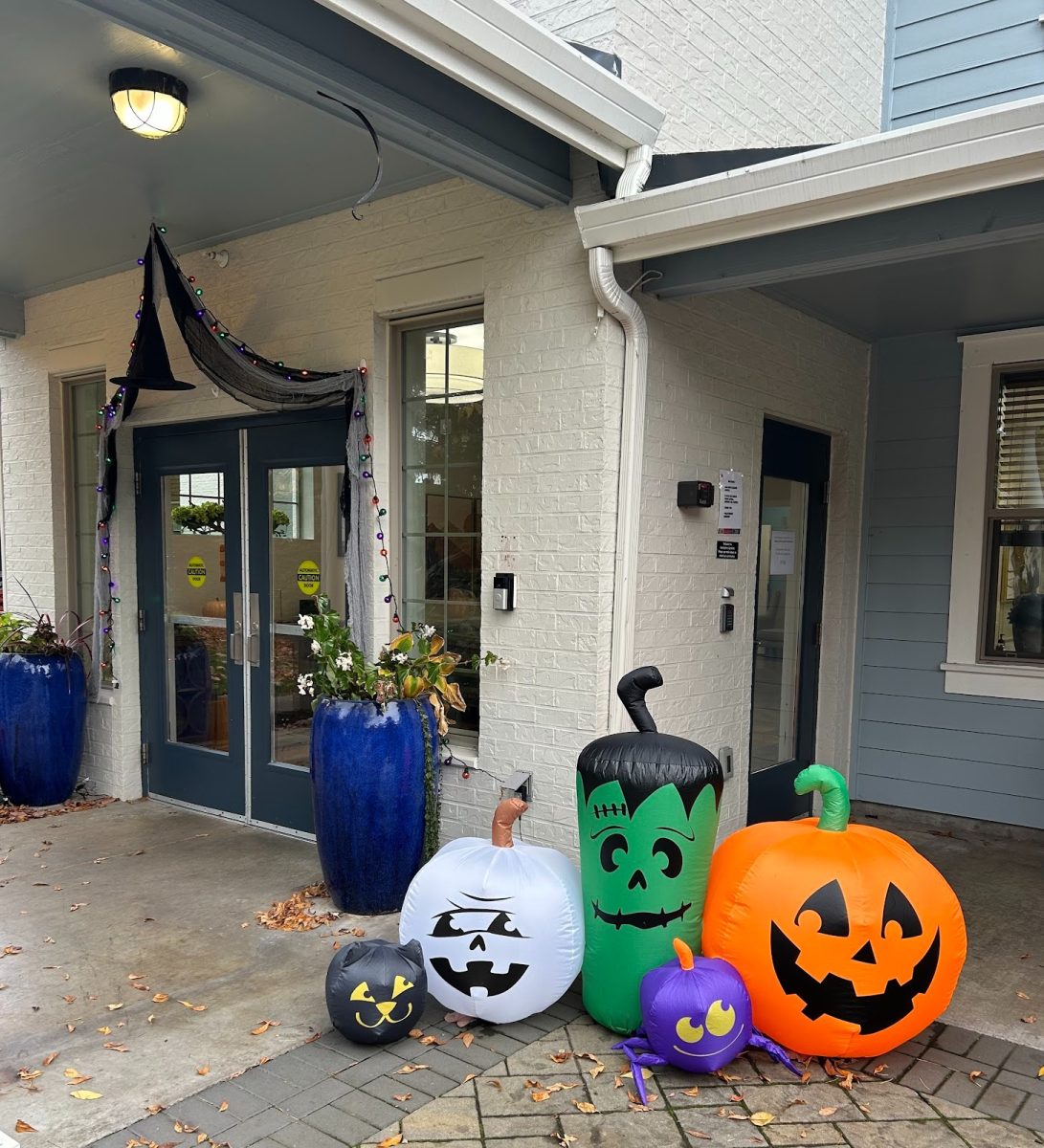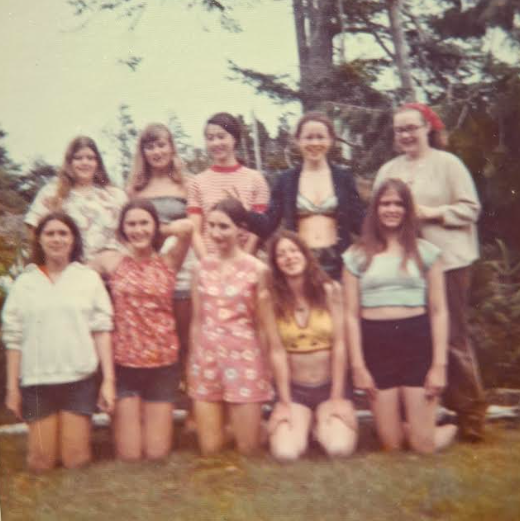
The drive to the Portland Expo Center is not a particularly exciting one. From my house, you take Interstate 5 the whole way, and since it’s 7:00 in the morning, you’ll likely just miss the heavy traffic that bottlenecks near the Moda Center. Groggy-eyed friends slump in the back of the car, coffee mugs, sharpened no. 2 pencils, and pens with black or dark blue ink in tow. Arriving at the building sparks an awakening in us as we eye the groups of equally sleep-deprived teens clumsily making their way in the glass doors, wondering who we will see. It’s an odd experience as we jump out of the car and head into the building. Stress is high, but energy is low. The non-school, yet academic environment throws us off. Anabelle Jukkala (11), took the AP Psychology and AP US History tests at the Expo Center, and spoke about its weird vibe. “It was just super sterile and not welcoming at all,” she noted.
The strange vibes could stem from an even stranger history. The Portland Expo Center website has a timeline detailing the life of the building. It served as a meat-processing and livestock-holding facility from the time of its erection in the 1920s up until the 1950s. The website boasts that it was the largest livestock exhibition center on the West Coast during the time period. As we are handed our personalized AP identification labels and shepherded into the long, cool, hall, it’s hard not to feel like cattle. The slow movement of the crowd and the blind following of the person directly in front of me makes it easy to close my eyes and imagine how it would feel to be a cow in this room 100 years ago. The sound of Birkenstocks and slippers on the soft rug is not the same as the sound of hooves on stone, but as I make my way in, I can almost see the throngs of animals, making their way to slaughter.
We settle into our plastic seats. My friends and I are separated, yet I can see them scattered around the room. We’re instructed to use the restroom, or else we will not be allowed to go for a long while. A large clock at the front of the room is blinking the time at us. Minutes click by. Our proctors tell us to place our devices into plastic bags and fill out our bright green identification sticky notes on the table. “It’s so we can match the student with the test,” says my proctor. She seems nice. I don’t believe that she works for the College Board, which causes my shoulders to de-tense. Max Bruin, a senior at Franklin, had a positive experience with the proctors, as well as Jennifer Truong, who said the “proctors were helpful.” Bruin recalled that he wrote “Hi AP Person :)” on his ID label sheet, and then one of the proctors wrote “Hi Student!” which he thought was cool. My distrust of the proctors is possibly unfounded, I reckon. I remember again that I’ve paid $70 to be here. I shift uncomfortably in my seat.
We’re told to place our bags under our tables after removing all food from them. “You will not be able to open your bags once the test has begun,” threatens the main woman. Her voice ricochets around the room. Step-by-step, we begin to fill out the identification form on the back of our multiple choice pamphlet that has been passed out. We are also given a shrink-wrapped packet of test materials, however, we are cautioned not to open it until we are told. I look around. Even if I wanted to open it, I could not. Eyes are everywhere. Cold air blows throughout the room. A fan is constantly whirring, yet the monotony causes us only to realize its presence once it shuts off. After that, the silence is unbearable. I can hear my blood rushing in my head. I learn later I was not alone in my discomfort. “That place gives me the chills,” said Olivia Stills, a sophomore at Franklin.
Nearly five million tests were administered and taken in 2020, according to a report by College Board. However, this year was the first year of in-person testing for almost all test-takers, as 2020 and 2021 were online. The only people who had previously taken an in-person test were seniors who took an AP class freshman year. The tests are notoriously strict, with countless rules such as; no forward-facing baseball caps, no touching your bag, and only one person out of 400 up at a time to use the restroom. These rules are justified by the fact that college credit can be awarded to those who pass, and colleges don’t wish to just give out credit to anyone. For those who work best in groups or when they can bounce ideas off of others, these tests can be extremely difficult, because you are truly alone in a room full of people.
My table is intensely squeaking. Every time the kid next to me fills in a bubble, it lets out a cry. Finally, our proctor comes over to us.
“Is that the table?” she whispers.
“I think so,” the kid next to me says. He’s nice, seems chill, and very apologetic for the ruckus we’ve caused. The proctor walks away, and the squeaking continues.
Finally, a woman in a teal shirt has had enough.
“We’re going to move you two to another table,” she whispers next to me, scaring me out of my mind. I had not heard her walk up, the soft carpet muffled her movements. I begin to pack up my stuff. She kneels down next to my bag. “I need to watch you as you pack up and move,” she says. Her eyes follow as I place my apple back in my bag. “We wouldn’t want you to cheat with your apple.” Donagh Palmer (11), compares the Expo Center environment to what he presumes to be the vibe of testing in smaller rooms. “Small room tests [would be] better. The intimidation tactics weren’t as effective when you weren’t in [an] airplane hangar.”
The Expo Center is not an airplane hangar, although it can feel that way. Its long, high-ceilinged halls, and desolate location (it’s in Jantzen Beach, sandwiched between a golf course and the Columbia River) makes most test-takers feel out of place. And being in a room full of teenagers yet not being allowed to talk to one another is also unnerving. “[The Expo Center had] very weird vibes…” says Shala Santa Cruz Krigbaum (12). “[I] almost messed up my bladder twice because of strict bathroom rules,” describing how they had to use the restroom multiple times, yet were not permitted to. “I was still in line [for the bathroom] when the time ran out. It was absurd and I’m surprised that my bladder didn’t explode like a nuclear bomb!” Sarah Watters (12), agrees that the overall experience was bad. “The big room and silence gave me lots of anxiety.”
I’m relocated to a new table. As the main woman at the front of the room continues to drone on, I drift off. I spot my friends scattered across the room. I reach out to them with my thoughts, but none of them turn around. I think about this hall. It’s massive, with tall ceilings, and everything in it is gray or black. I think about how many of us there are in this room. I can feel the anxiety in the air. I wonder if the Japanese citizens who were held in this room 80 years ago were quiet in their compliance, like us, or if they were loud and defiant. I wonder if they had been watched from all sides like we are, and I also again recognize that my presence here, in this room, is voluntary, whereas their presence was not. Still, I can’t help but wonder how they felt.
In 1942, after President Roosevelt released Executive Order 9066 that ordered the “evacuation of all persons deemed a threat to national security,” the Portland Expo Center ceased to be a place to hold livestock, and served a new purpose: it held Japanese Americans before they were sent to concentration camps in neighboring states. Around 3,500 people were held in the converted livestock corrals for five months before being thrown across the West Coast into camps with horrible living conditions, against their will. I think about how they must have been shoved into these very halls we are sitting in now, separated by the crowd from family and friends, forced to give up everything they knew. I think about how their every movement was watched, and I also consider how my post-test plan of getting bubble tea and taking the day off from school differs from what they did once they left the center, whisked away from their lives to be held captive by the United States government. Again, I’m reminded of my relative willingness to be in this long, cold, hall. I am grateful that I am in this building for AP testing, and not for imprisonment. Still, thinking of the people who once inhabited these walls, people that I share a quarter of my blood with, makes the air feel just a bit colder and the clock ticking on the screen looks a little bit more sinister.
The test goes by relatively quickly. We are reminded again to never discuss the questions, or our answers, with anyone. My brain works quickly on tests like these, and I thank it, knowing that the questions are designed to confuse. As I scan the room, I’m wondering what others are feeling. Some people are passed out on their desks, others are rapidly scribbling. When I asked other students about their experience in the Expo Center during the tests, a typical response was that the whole experience was neutral at best, with some saying it was bad. For most of us, AP testing is the only reason we enter the doors of the Portland Expo Center, however it’s also used for a multitude of things, including hosting the circus show “Cirque Du Soleil,” gymnastics tournaments, dog shows, and more. The history of the building, from its meatpacking days to the imprisonment of Japanese citizens makes it an odd, but somehow fitting location for students to participate in College Board-sanctioned testing.


